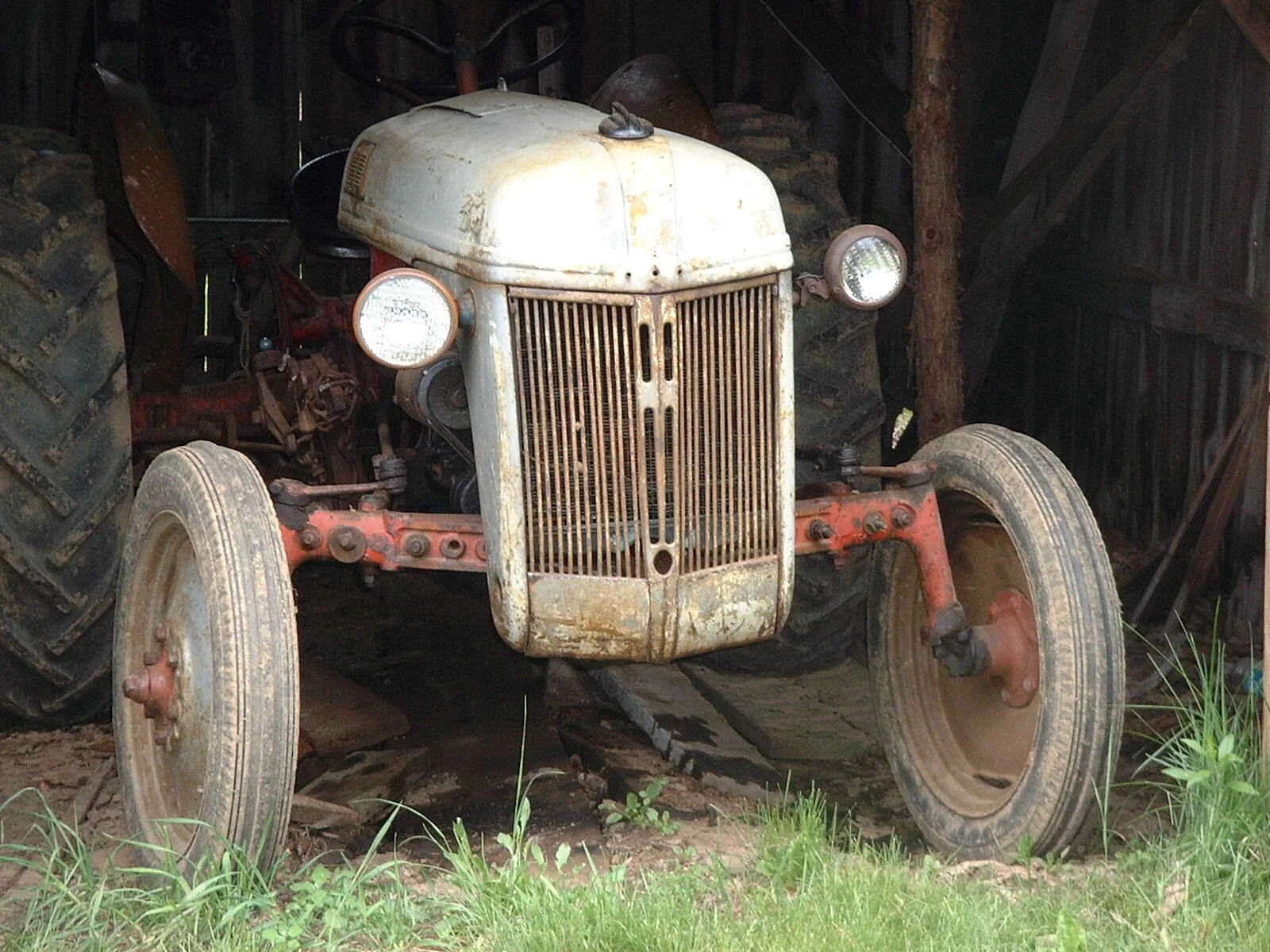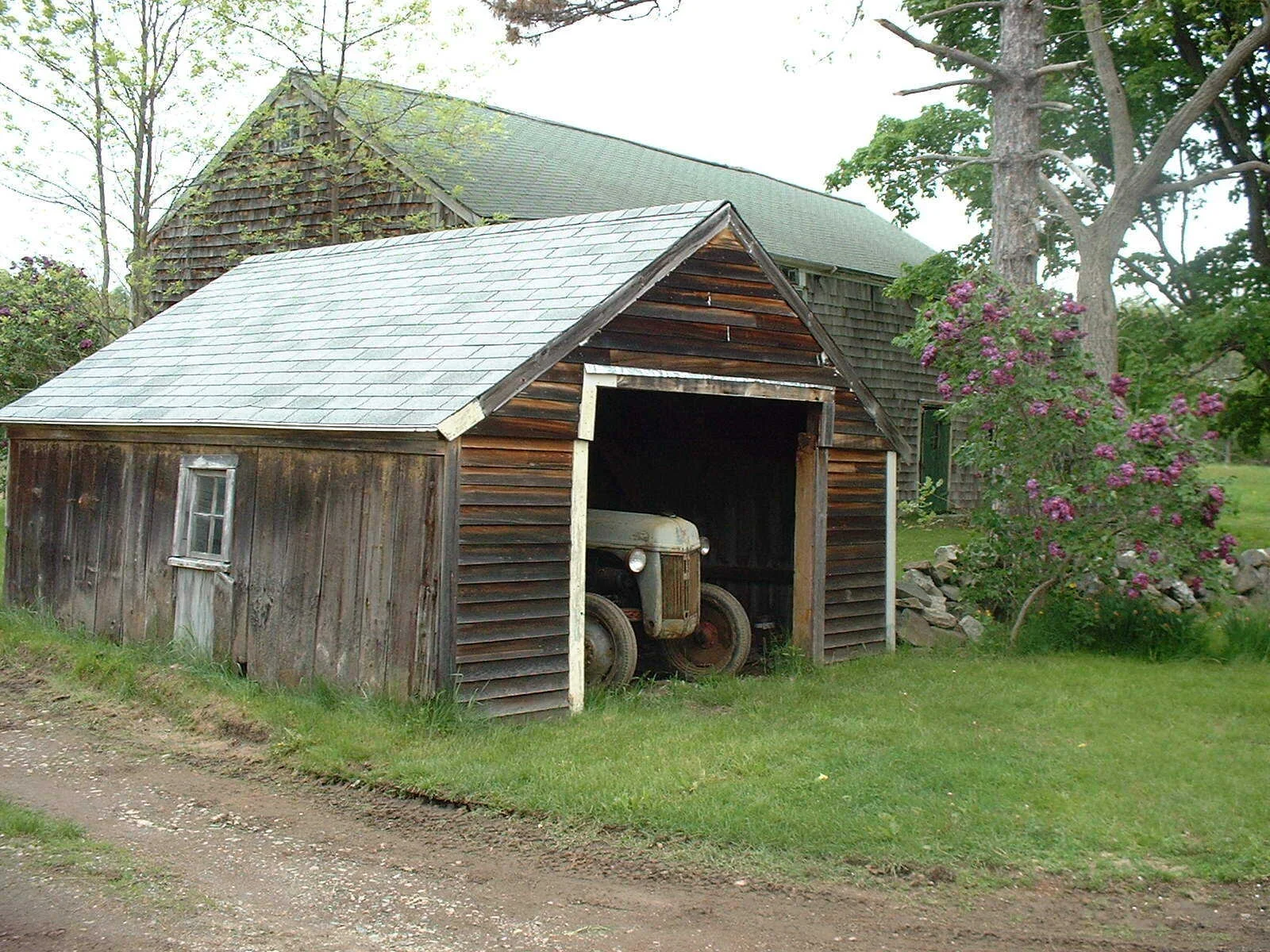Driving Miss Paisley...a blog by Bethany Groff Dorau
When I was a teenager living in West Newbury, I was the proud owner of the world’s most beautiful, most unreliable car. She was a 1975 Mercedes 300D sedan, tan, leather, matching tan hubcaps – the works.
The OM617 inline-5 diesel sputtered to life about thirty percent of the time. The rust holes on the wheel wells, in the floor, under the gas tank, were a swirl of Bondo, primer, and mis-matched yellow paint. My friend Shelley, always one to see beauty in decay, turned these textured blobs into paisley swirls. We named the beastly beauty Miss Paisley.
But oh, those three times when, after accelerating for two or three hours, she reached her top speed of sixty miles per hour, Miss Paisley was heavenly – soft but solid, with just the right amount of shot-struts squishiness.
Mary Page (Anderson) Poore and Howard Sumner Poore haying with the old tractor, 1970, and a close-up below. (Courtesy images.)
Most days, I marched resolutely out to the car, turned the key to allow the coil to warm up, then attempted a start for ten minutes or so before leaving her to spend another day as a lawn ornament, and I walked wherever it was I needed to go.
My job at Friendly’s on Storey Avenue was three miles away and took about 45 minutes if I hustled. I was generally running late, my automotive optimism unfounded once again, and so I ran down Poore’s Lane, down Garden Street and took a side-skipping right turn onto Middle Street. By the time I turned that corner and waved to my great aunt and uncle, Mary and Howard Poore (Aunt Emily’s eldest brother, for those of you playing at home), I had come to my senses and slowed to a fast walk.
Even late as I was, I always stopped at the little shed by the side of the road where Uncle Howard’s ancient tractor lived, caught my breath, gave it a pat, and picked up the pace again. I jumped over the bump in the middle of the (now derelict) bridge over the Artichoke and said “good luck” under my breath.
I remember when I was learning to drive, I went over the bump a little bit too fast in my great-aunt Emily’s navy-blue K-car, and she said “that’s lucky.” I took it to mean that the bump was lucky, and it became a tradition to pop over that bump and say “good luck” amongst my friends. Later I asked her if she had always thought the bridge was lucky. She snorted. “I think I just felt lucky that I didn’t end up in the river, the way you drive.” Oh, well. The tradition stuck. The race to work ended with a sharp turn at Turkey Hill, and then a sprint down Storey Avenue.
The tractor retired to its shed, becomes a year-round landmark on Middle Street, West Newbury, Mass. (Courtesy images; black and white image from the Newburyport Daily News.)






